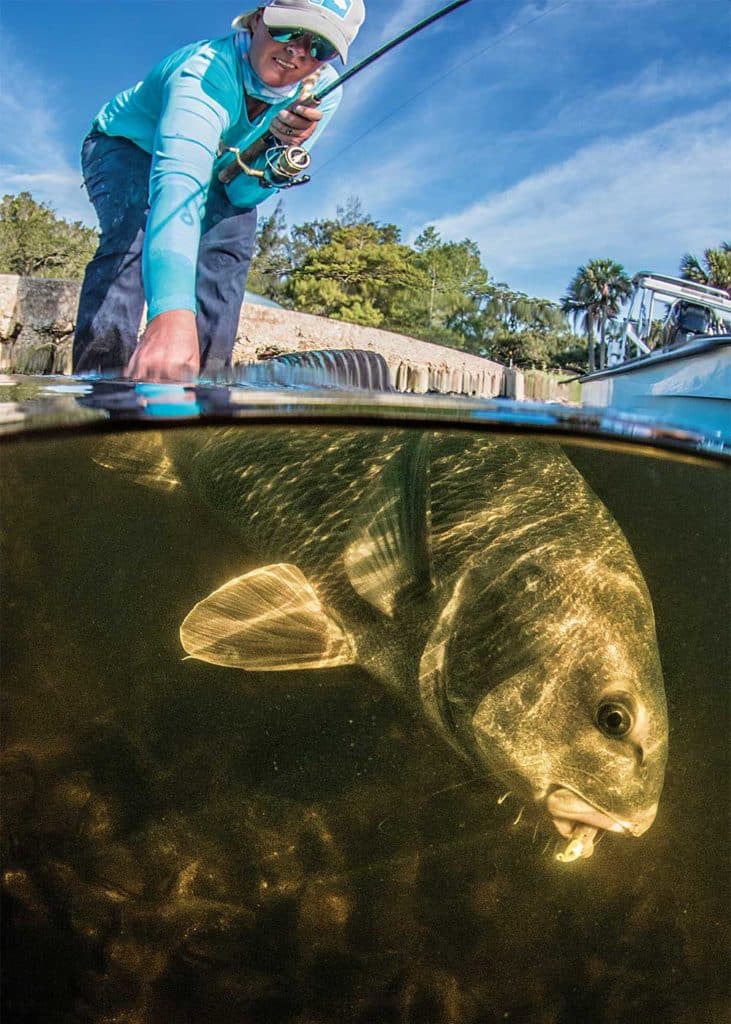
“Thunk!”
The sounds — somewhere between a kid banging on a toy drum in an echo chamber and a boulder dropping into deep water, rolled through the hull. “What was that?” my buddy asked, partially startled by the booming resonating from the water around the boat.
“Black drum,” I told him as I cast a baited hook to the inshore Gulf waters. “Maybe some big ones, but more likely a lot of smaller ones migrating north.”
“How big?” he asked.
“Some of the biggest inshore fish there are. Over a hundred pounds big. But most are going to be between 5 and 40 pounds.”
Before he could ask another question, the sounds increased a bit, my rod tip dipped with a solid strike, and I engaged in a tug of war with a stubborn, bullheaded fish. Unlike red drum, which will fight in runs, black drum just put their shoulders down and pull like a tow truck. A few minutes later, though, I put a 9-pound juvenile black drum on the deck. Its four broad, black vertical stripes resembled a sheepshead and identified it as a youngster, but its whiskery mouth distinguished it as a black drum.
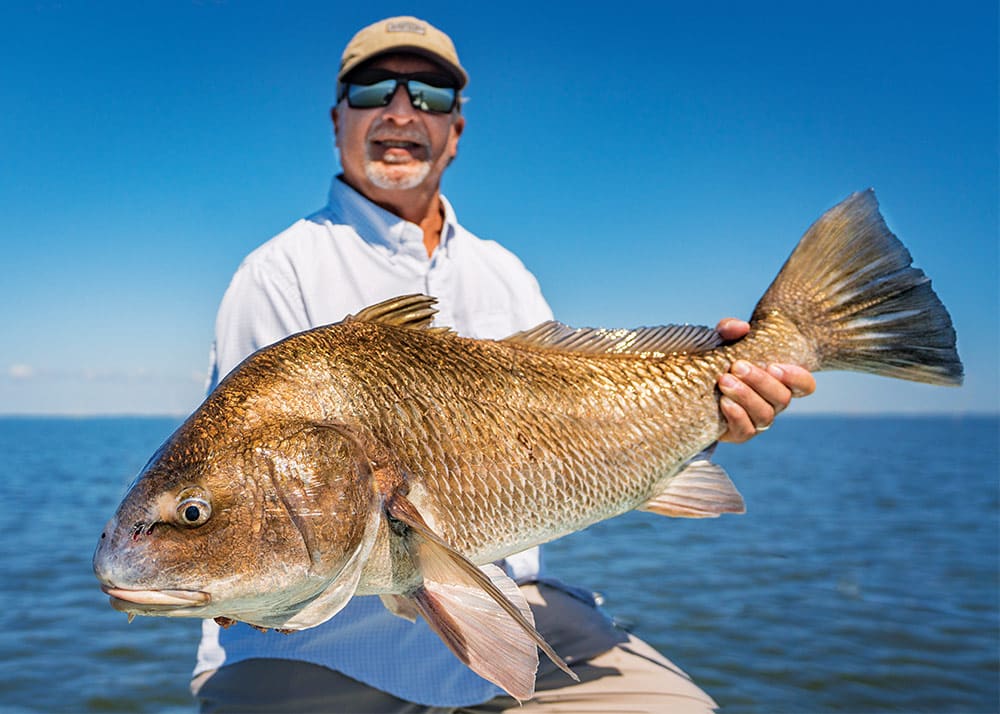
The Drum Lines
Black drum, also known as banded drum, drum fish, big drum or gray drum, depending on local parlance, are growing in popularity among inshore anglers. There is much to know about black drum, but from Nova Scotia through the Gulf of Mexico and the Caribbean to Argentina, there are two key characteristics: They are drum and they migrate.
During their mating season, between January and April, black drum emit a deep bass mating call, like Ginger Baker playing on cardboard boxes. These pulsing tones give away their presence during their migration.
Mature black drum will school up in nearshore waters, often with red drum, jack crevalle, or even cownose rays, before beginning their migration. Most prevalent on the Atlantic Coast from Cape May, New Jersey, to Florida, and all along the Gulf Coast to Texas, the largest numbers are found in the rich inshore waters of the Gulf. Their spring migration north traces the estuaries as the water warms.
Southern waters see black drum moving in mid- to late spring; larger fish take up seasonal residence in the outer reaches of inshore waters, with higher salinities. Smaller fish push deeper into the estuaries, more adaptable to less-saline waters.
The northern reaches of their range, such as the Chesapeake Bay, see black drum appear in May, and by June the populations have moved in for the summer. By early autumn, when water temperatures again drop, the drum head south again to warmer waters.
Finding black drum can be tricky, because they may appear in a particular spot one day and be gone the next as they migrate.
Researchers from Old Dominion University studying the long-range migrations of black drum found that fish tagged in northeast Florida appeared about four months later at the mouth of Chesapeake Bay.
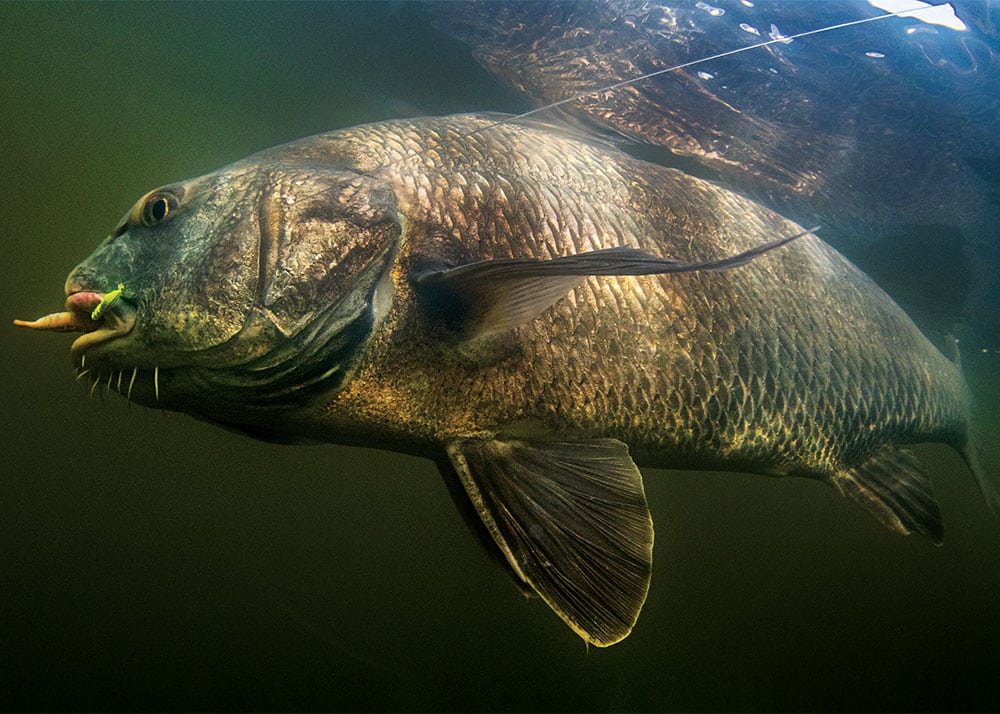
Target the Migration
Migrating black drum reveal themselves to anglers with their drumming, but they also send up signal flags. Drum are bottom feeders and, as they nose down to forage, their broad tails often wave above the surface in shallow water. During low tides or in shallower estuarine waters, look for tailing fish.
Those waving tails offer a clue to their feeding habits. Larger drum focus on crabs, shrimp and other crustaceans, as well as mollusks such as clams, mussels, oysters and scallops. Juvenile black drum, the ones you find deep in the estuaries, are as likely to feed on small baitfish and sea worms.
All Atlantic states enforce a minimum size limit of 14 inches. Louisiana, however, has a 16-inch minimum. So the smaller, baitfish-eating drum remain a catch-and-release fishery.
When targeting black drum, bait tends to outproduce artificials. Because drum forage by rutting through mud and sand, scent trumps sight, and their chin barbels help them sense food on the bottom.
For bait, blue crabs, mud crabs and fiddler crabs are your best bets, either rigged live, with pincers removed and hooked through the carapace, or halved and crushed. When rigging mud crabs or fiddlers, it’s a good idea to crack the carapace to release scent into the water.
Black drum will take either live or dead shrimp too. However, get rid of the floats and popping corks; get the bait on the bottom.
Read Next: Pound the Black Drum
If you opt to target black drum with artificials, many of the same patterns that work for red drum (redfish) work for black drum. The largest black drum I’ve caught hit an artificial: a 2-inch Savage Gear TPE 3D Crab. Other artificial crabs such as D.O.A.’s Softshell Crab or Berkley’s Gulp! Peeler Crab are also effective.
From time to time, they’ll hit a gold spoon or a spinnerbait such as Strike King’s Redfish Magic. Other baitfish imitators can also be effective, including simple soft bodies fished on jig heads. Scented baits, nevertheless, improve your chances, and rigging spinnerbaits with scented bodies like those by Gulp!, or simply adding Fishbites, increases the scent trail and the angler’s chances for success.
Drum travel in schools. It’s not often that you’ll find loners, though some of the bigger adults hang on to the edge of the school. They move slowly across the bottom, grazing on what is directly in front of them, thus successful presentation requires placing the bait or lure in front of them.
Cast in their travel path, letting the fish move to the bait rather than trying to tease them in. An occasional twitch of the rod tip helps keep the scent moving, but don’t overdo it. Too much motion and you’re likely to pull the bait out of their feeding lane.
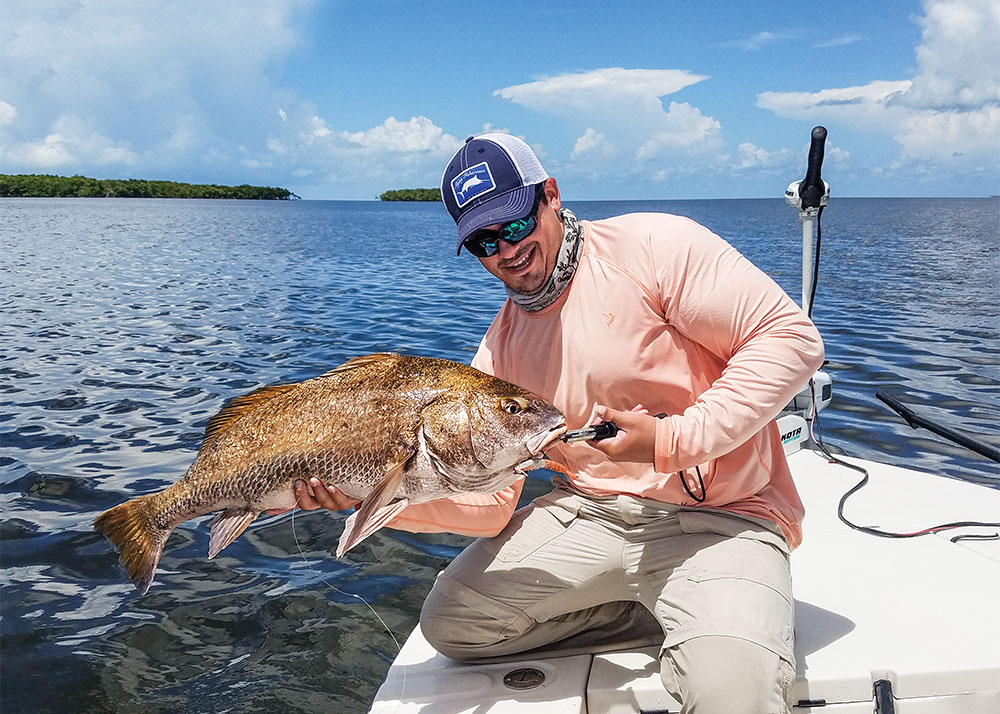
The Dinner Drum
Part of the popularity of black drum among inshore anglers is its reputation on the table. Inshore anglers are learning that black drum is one of the finest inshore edibles around. Many anglers simply replace red drum with black drum in their recipes.
However, there are a few important notes about catch-and-fillet practices for black drum. The first is that the smaller fish — those under about 15 pounds — make better table fare. The bigger fish tend to get spaghetti worms. Likewise, the larger specimens have heavy scales, demanding extra effort to clean or scale. Thus, if you want black drum for the table, you’re better off keeping those smaller ones.
“Thunk”
The fish continued to drum that spring morning for a little while longer. We put four on the boat, the largest pushing near 30 pounds.
“Y’know,” my buddy observed, “that may be the greatest drum solo I’ve ever heard.”
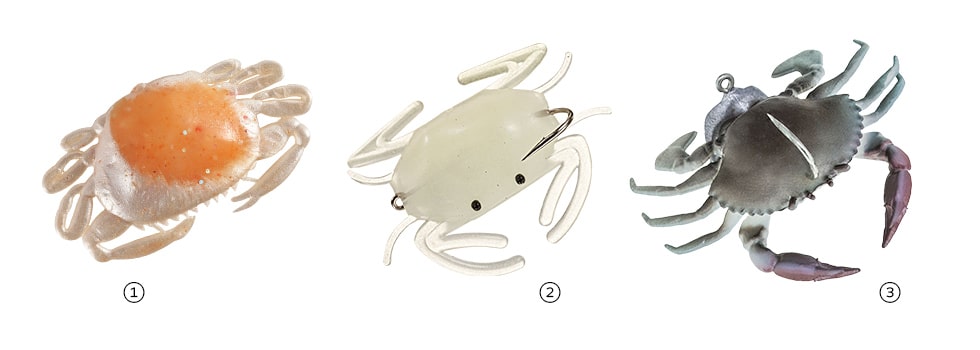
[2] D.O.A. Softshell Crab – This crab lure is designed to move sideways along the bottom like a real crab would.
[3] Savage Gear TPE 3D Crab – Bounce this lure and let it rest on the bottom to mimic a crab’s defensive stance. Courtesy Manufacturers
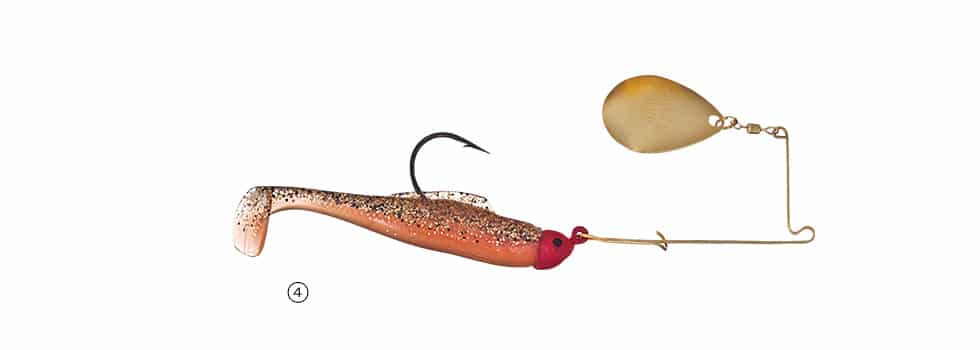
SWS Planner – Atlantic Coast and Gulf of Mexico Black Drum
What: Black drum When: May and June Where: Cape May, New Jersey, to South Florida, and the Everglades through Texas
Who
Black drum fishing is well-suited for do-it-yourselfers, but these captains will shorten the learning curve:
Southeast Louisiana and Florida’s Gulf Coast
Capt. David Mangum
850-534-4349
shallowwaterexpeditions.com
Capt. Greg Dini
504-909-0941
flywaterexpeditions.com
SWS Tackle Box – Atlantic Coast and Gulf of Mexico Black Drum
Rods: Medium-heavy spinning or baitcasting
Reels: 3000- to 4000-class spinning, 200 to 400 baitcasting, depending on target fish size
Line: 12- to 30-pound, depending on reel size, 30- to 50-pound mono leader
Lures: Crustacean imitations such as the Savage Gear TPE 3D Crab and 3D Manic Shrimp, D.O.A. Shrimp and Softshell Crab, LiveTarget Fleeing Shrimp, Unfair Lure Rattlin’ Shrimp; gold spoons; spinnerbait hybrids such as the Red Daddy, Strike King Redfish Magic or Z-Man DieZel Spin
Bait: Blue, pass, fiddler or mud crabs; shrimp; cut ladyfish or mullet
Rigs: Bottom rigs for bait; hook sizes ranging from 1/0 to 4/0 based on bait and fish size









